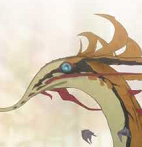Humans have been using amputation for over 30,000 years.
oh yeah for gangrene and stuff
that’s a good answer
Going to stake out a position on this one- also not a cure, you’re just stopping the spread of disease. The limb you just cut off is not cured in any form. Those bacteria are living just fine.
It’s like cutting a firebreak in the woods during a wildfire, it’s not actually putting out the fire, just containing it. Maybe I’m being too pedantic, but many of these examples do not seem like cures to me.
If you think my idea of “cure” sucks just tell me, don’t drive by downvote. I could be wrong, it’s happened many times before. I’m here for a discussion, maybe you can change my view. It’s just IMO, many of these are not cures.
There was the cowpox vaccine in 1798
and I suppose we have had effective pain-control (opium) for a very long time
- Anyway, the cowpox vaccine was an improvement on smallpox variolation, which was known to the Chinese at least by 1549.
Vaccines are preventative medicine, they’re not cures. I’d say cures are something that eliminates a disease after it’s acquired. Vaccines do nothing if you’re already actively infected. Opium does not eliminate pain, it masks it temporarily, thus it’s not a cure. It’s a treatment.
I’d say arsphenamine, it was the first modern anti-microbial agent.
We have evidence of trepanning (drilling holes in the skull) going back to the flint tools time period. We still use this today to release pressure after a bleed in the skull.
It was a lot more brutal and had a much lower success rate back then. But the fact that we find so many skulls with evidence of trepanning means that prehistoric humans must have considered the low success rate worth the risk. What’s interesting is there’s no way they actually knew what trepanning could help with, since it’s to do with intracranial pressure. So in the same way the medieval cure for everything was bleeding, whether or not the disease had anything to do with blood, trepanning seems to have been the proverbial hammer for which everything looks like a nail.
Head injuries would have been common, bleeding on the brain was probably easily recognisible in warriors for which it would help. How they discovered that it helps… nice
i can’t imagine that increased intracranial pressure feels good. maybe one guy was like ‘my head feels like it’s gonna explode’, and some other guy was like, ‘i’ve got an idea’. or maybe someone happened to get just the right kind of second head injury shortly after their first head injury that somehow made them get better. it’s a lot of unrecorded things happening back then. if only they had invented writing and wrote it down.
Something I read in an off hand comment was that some people believed it got evil spirits out
This information assuming I’m remembering correctly is mostly educated speculation so don’t quote me on this
Not so much a disease as an occupational hazard though…
Chimpanzees are known to put special plants on wounds to heal them better, so my guess is that other animals do it also to some degree. Cows eating special plants for their stomach, chickens eating small rocks and sand, hell even dogs and cats eating some plants to fix their stomach.
“Fix”. If I’m 10 minutes late with my dog’s breakfast he decides he needs to eat half my lawn.
20minutes late and you do not have to mow.
That’s clever, but I’d rather mow than mop.
Limeys figured out scurvy around 1600
The British then forgot why they gave everyone citrus, screwed it up and started getting scurvy again.
Saying consuming vitamin c is the cure for vitamin c deficiency is like saying water is the cure for dehydration.
If that’s the standard for “cures” then animals figured out the cure for dehydration before humans even existed.
Go check out the alledged link between the snake wrapped staff that’s used to represent medicine and the treatment for guinea worms. Googling puts that theory with the Ebers papyrus from 1500 BC if it’s true!
It always looked suspiciously like ida pingala sushumna to me
Confusingly, there’s actually two similar staves that get mixed up. The helix patterned one with two winged snakes I think you have in mind is called the Caduceus, but the the single wingless version I meant is the staff of Aesculapius (multiple spellings out there).
Oh
Animals were doing it long before humans even existed. Some birds will “bathe” in an ant nest because the formic acid excreted by the ants rids them of parasites. There’s even a word for it - zoopharmacognosy.
Long before recorded history, people knew what plants were helpful to treat or cure various maladies. Who knows what possessed the first human to chew on willow bark to relieve pain or reduce a fever? The earliest documentation of it was 400 BCE by Hippocrates, but it was probably common knowledge for much longer than that. The Chinese have been using various herbs to treat disease for at least 3000 years.
The Edwin Smith Papyrus, a papyrus made to treat traumatic brain injury or TBI, is the very first written work made to remedy a medical condition in a way that doesn’t depend on sorcery, written around 2000 BC. It gives a detailed account on some but not all do’s and dont’s of such injuries. I cite this because it actually suggests Egypt knew better than those of us alive today.
Cool. Thanks.
There is this recent paper about ants, https://arstechnica.com/science/2024/07/call-the-ant-doctor-amputation-gives-injured-ants-a-leg-up-on-infections/
Maggot therapy goes back thousands of years
I’m not sure if it counts as a cure or more of a prevention, but smallpox was eradicated in 1980 through vaccines!
There was effective medicine before 1980






